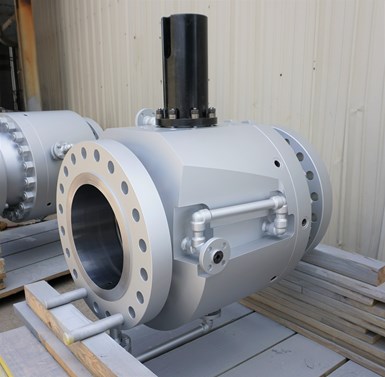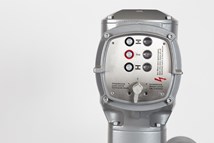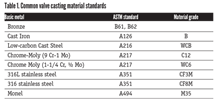CASE STUDY: ValvTechnologiesā Purge Design Saves More Than Half a Million Dollars
Coker inlet feed valves at a bitumen upgrader in Canada’s Oil Sands were experiencing run-time and reliability issues due to coking up. The severe internal damage to the valve body and actuation reduced the plant’s efficiency and significantly affect daily operation output and performance for the client.
#actuators
Edited by Margo Ellis
CHALLENGE
The valves on the upgrader’s inlet feed would coke up and experience mechanical damage internally to the valve and the actuation resulting in unexpected downtime. This coke fouling would increase the valve’s required torque, compromising both valve stem and actuation interface. The customer sought a dependable solution to increase the mean time between repairs, operating output and performance, while and decreasing costly unexpected downtime.
SOLUTION

met with the end users’ technical team on-site to discuss the coker valve design for the 16-inch CL600 C12 inlet feed isolation valves in question.
Key points that highlighted ValvTechnologies’ solution:
- ValvTechnologies’ heater isolation valves installed in this unit have provided excellent run time and reliability.
- The Maximum Allowable Stem Torque (MAST) values of the cokers notably exceeded the existing valves. The calculations demonstrated that these robust stem designs could withstand significant applied force, which was instrumental to the technical expert’s decision.
- ValvTechnologies’ purge design philosophy allows for a custom purge configuration that is precisely dropped in place to utilize existing purge connections. The continual sweep design removes and displaces hot bitumen from valve body cavities to prevent solidification upon cooling after closing.
RESULT
ValvTechnologies’ valves performed beyond expectations during the first production run. In most cases, torque output readings taken during production were well below concern and the same as original baseline readings.
The valves’ performance in production exceeded the customer’s expectations so far that during a planning meeting to discuss an upcoming turnaround it was decided to keep the valves in service. This is the first time since the unit started up in which inlet feeder valves made their full production run and were not pulled for their turnaround period.
Not having to service the valves during the shutdown saved the customer approximately half a million dollars. Considering the total cost of ownership (TCO), the value of the well-functioning valve with purge design eliminated the need for regular replacement of valves. It increased production rates that, over time, improved plant operations.
The purge effectiveness of ValvTechnologies’ coker valves proved itself in this harsh, high asphaltene bitumen application.
Contact ValvTechnologies at info@valv.com for more information.
RELATED CONTENT
-
Metal Additive Manufacturing: the Evolving Road to Adoption and Standardization
Greater knowledge and acceptance of metal AM valve componentsāespecially with various standardization efforts underwayāwill spur the technologyās growth.
-
The Limits of Standard Manual Globe Valves for Throttling
A common practice in process services is to use manual globe valves with hand wheels for regulating flow.
-
Paint & Coatings
A walk through a typical valve distributorās warehouse will yield a contrasting view of either silver or black products.






 Unloading large gate valve.jpg;maxWidth=214)

